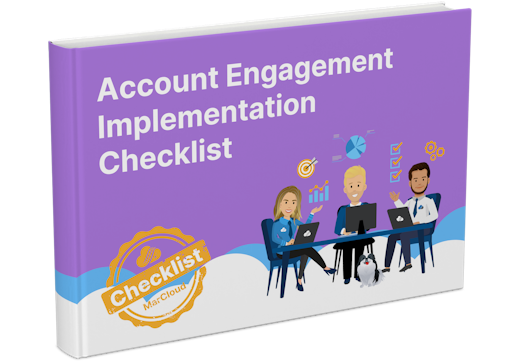This blog was written before Pardot was renamed to Marketing Cloud Account Engagement. You can read more about the name change and what it means here.
What are Pardot connectors?
One of the reasons to use a comprehensive automation software like Pardot is so you’re able to run and monitor all lead generation and prospect activity in one place.
While Pardot has a huge number of features and capabilities that make this possible, there is still some need for using third-party tools, depending on your marketing strategy.
Most Pardot users also use Salesforce CRM, which is a separate product, despite coming from the same company (although, the long-term goal for Salesforce is to integrate the systems so seamlessly that there is a single view of the customer).
Perhaps you run webinars as part of your content strategy or manage event tickets sales using EventBrite.
You might use Live Chat on your website or bit.ly to shorten branded links.
All of these tools are outside of the Pardot platform but that doesn’t mean you can’t integrate them with your Pardot account so you have visibility in a single place.
Pardot connectors are the way to integrate your third-party tools with the Pardot software.
By setting up Pardot connectors, you can draw information about your prospects gathered using activity on these third-party tools into the profile for that person in Pardot. Information like ticket registration details, webinar attendance, and so on.
Why use Pardot connectors?
There are a bunch of reasons to use Pardot connectors and I’m sure a savvy business marketer you can guess most of them.
In my eyes though, there are at least four reasons Pardot connectors are essential:
To save time
When you use Pardot connectors to integrate with a third-party tool, you don’t have to spend time switching between the two to either view or import data collected from one to another.
To make sure your prospect profiles are complete and up to date
The last thing you want is disparate systems housing different information about the same person.
If this happens and your sales team call a qualified lead based on the information they have in Pardot alone, they are missing information that could be really valuable in order to win the customer.
It could also result in your company coming off as unprofessional or disorganised if you overlook information about a lead found in one of your systems outside of Pardot.
Plus, giving your sales team access to all of the external activities a prospect takes, directly within their Salesforce lead/contact record makes it much more likely they can strike up a conversation and hone in on pain points the prospect is most interested in discussing.
Which, of course, means they are more likely to win the lead as a customer.
Less manual data handling and better quality and governance
Being able to import prospect data from third-party tools straight into Pardot without having to manually do this task is a safer and risk-free way of handling data.
Manual data entry - even if it’s a simple copy and paste - can result in inaccuracies and human error that could lose you the opportunity to convert a new customer altogether.
For better tracking of return on investment
Pardot connectors make it possible to align lead generation activity on third-party platforms, like Google Ads, with revenue generated in Pardot.
As marketers our ultimate objective is always to prove marketing impact and ROI.
Pardot connectors make the task much easier than having to manually match up lead generation sources with closed sales.
What you need to know before using Pardot connectors
Before you do anything in your Pardot account, you need to familiarise yourself with the connectors you are considering.
Most come with step-by-step guides from Pardot that you can download on their Help site, like this one for the Salesforce connector.
Depending on which connectors you are keen to use, you’ll need to know a few things.
General
- You will need relevant login credentials to set up each connector.
- It’s a two-stage process. The first stage is setting up the connector (you do not need any credentials for this) and the second stage is verification (connecting the connector to your accounts).
Social Posting
- You can have unlimited amounts of social posting connectors.
- The social posting character limit for Facebook is 4,000, LinkedIn is 700, and Twitter is 140.
- The LinkedIn social posting connector supports individual and company pages. It doesn’t support LinkedIn Groups.
- Disable auto posting between social media accounts before using Pardot social posting.
- If your Facebook account is configured to automatically post to Twitter, disconnect the accounts, and then set up separate connectors for Facebook and Twitter.
- Posting to Google accounts is not available due to Google API limitations.
- Links are uniquely rewritten depending on the social connector that the URL is posted to, such as Facebook or Twitter.
- Links are rewritten when the message is posted.
- You don’t see the bit.ly link populated before the message is posted.
- If you have the bit.ly connector set up, links are rewritten with your custom account URL. Otherwise, Pardot creates a standard bit.ly URL
Salesforce
- You can have only one Salesforce connector in Pardot.
- Pardot can integrate with Salesforce Person Account record types. To enable person account syncing, contact Pardot Support.
- Importing prospects into Pardot causes them to sync with Salesforce. Unassigned prospects sync to Salesforce, but records aren’t created when there is no matching email address.
- Pardot checks for changes in Salesforce and Pardot up to every 2 minutes. If youre seeing slower sync times, contact Pardot Support. If you’re updating a large volume of records at a time, it can take longer for all changes to sync.
Our pick of must-have Pardot connectors
Google Analytics Connector
The Google Analytics Connector enables google UTM parameter tracking, so that you can track the performance of specific PPC campaigns and other tracked links. Also, no login is required to set this up.
Wistia Connector
This one is pretty cool.
With the Wistia Connector, you can track the amount of time that a prospect views your hosted videos and score them accordingly. You can also acquire a new prospect via video views as it syncs directly into Pardot and creates new prospects.
If you need guidance on using the Wista Connector you can find Pardot help information here.
LinkedIn Social Media Connector
Pardot has two separate LinkedIn connectors, one for prospect/company analysis and the other for social posting.
Our pick is the LinkedIn Social Media Connector as it allows you to quickly jump to the LinkedIn results for a prospect or their company.
In essence the LinkedIn Social Media Connector lets you view LinkedIn profiles for your prospects, based on their email address.
Once the connector is set up you’ll be able to click on the LinkedIn icon on a prospect’s profile to launch a new window with their LinkedIn information.
GoToWebinar Connector
One of the new Pardot features for August 2019 - the GoToWebinar connector has been updated and now allows you to track recorded webinars.
This connector syncs Standard, Webcast, and Recorded webinar types with your Pardot prospects so you can see within your account whether a prospect registered, even if you used the GoToWebinar form instead of a Pardot form (with some limitations).
You can view the past 25 months’ worth of webinar data (inclusive of past recorded webinars) in your Past Webinar list View.
Ready to use connectors?
Once you’ve checked out the list of Pardot connectors that are currently available and looked into the considerations for each, you can start connecting!
Continue to make your Pardot account provide a holistic overview of your prospects’ by integrating your third-party platforms.
If there’s a platform you use that doesn’t have a premade Pardot connector, it may be possible to build one using an expert developer and the Pardot API Documentation.
Need help with any of this? Our consultants are all over it and we’re happy to chat about implementation, support, training, development, or a managed service at any time! Just drop us a message.

Hollie Fitzpatrick
Hollie joined the MarCloud team with extensive B2B marketing experience. With a keen interest in marketing technologies, they strive to find the best solution to increase the efficiency and quality of marketing campaigns through rigorous testing and data analysis. A certified Pardot consultant, Hollie spends her days at MarCloud being fully solutions-focused.
More by Hollie FitzpatrickFeatured resource

Pardot Implementation Checklist
Starting out with Marketing Cloud Account Engagement, formerly known as Pardot, is no easy feat. Set yourself up for marketing automation success with this step-by-step checklist for implementing Account Engagement (aka Pardot). Work through the stages and get in touch if you need support!
Download now



